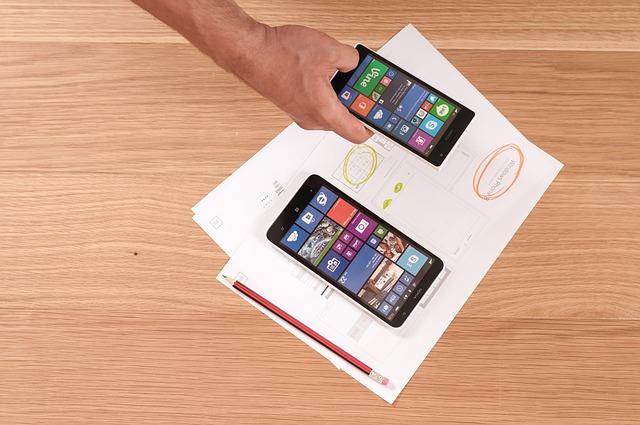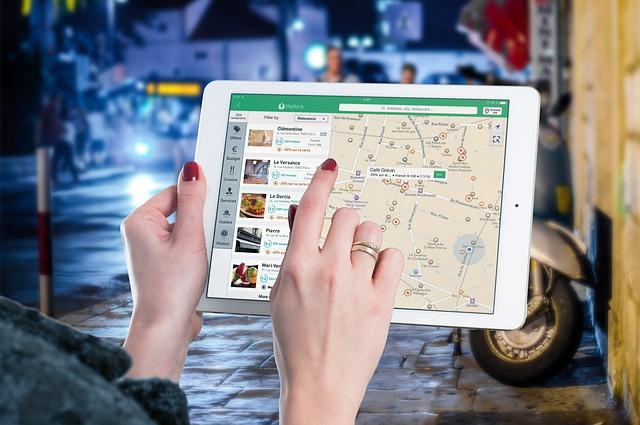Introduction to E-Commerce Trends
In the fast-evolving world of online commerce, it is essential for retailers to stay informed about current e-commerce design trends. This is particularly relevant for Houston retailers who are vying to capture the attention of local customers in a competitive marketplace. A well-designed e-commerce website not only attracts visitors but also plays a pivotal role in enhancing user experience, ultimately leading to increased sales and a stronger brand reputation.
As consumers increasingly turn to the internet for shopping, the significance of a visually appealing and functional e-commerce site cannot be overstated. A website that reflects the latest design trends demonstrates professionalism and credibility, instilling consumer trust. When users feel confident in their shopping environment, they are more likely to complete a purchase, fostering a positive relationship between the customer and the retailer. Furthermore, an intuitive design can simplify the navigation process, ensuring that customers efficiently find what they are looking for, thus reducing bounce rates and enhancing overall satisfaction.
For Houston retailers, the local market presents unique opportunities and challenges. With an ever-growing population and diverse demographics, understanding the preferences and habits of this audience is crucial. E-commerce trends that appeal specifically to Houston’s shoppers can provide a significant advantage in differentiating a retailer’s offerings from those of competitors. By incorporating localized design elements and tailored marketing strategies, e-commerce websites can resonate more profoundly with their target consumers.
In an increasingly saturated online retail environment, keeping abreast of the latest design trends is vital for Houston businesses. The ongoing evolution of e-commerce presents both challenges and opportunities, making it imperative for retailers to continually adapt their strategies to meet consumer expectations effectively.
Minimalist Design Aesthetics
In recent years, minimalist design aesthetics have gained significant traction within the realm of e-commerce, especially among Houston retailers aiming to refine their online presence. This design approach emphasizes simplicity, focusing on essential elements while eliminating unnecessary clutter. By prioritizing a clean layout, minimalist designs facilitate a seamless user experience that enhances usability and encourages customers to navigate the website with ease.
This trend promotes an intuitive interface that guides users effortlessly through product offerings. With fewer distractions, customers are more likely to engage with features such as product descriptions, images, and reviews, leading to increased retention and potentially higher conversion rates. For Houston retailers, adopting a minimalist design can create a more engaging shopping experience. This is particularly crucial, as e-commerce competition intensifies, and customers seek hassle-free interactions with brands.
Moreover, minimalist design fosters a sense of brand identity, allowing retailers to highlight their products effectively. By incorporating ample white space and uncomplicated categories, important items can be accentuated. This focused approach helps customers quickly identify key pieces, which is especially advantageous in a vibrant market like Houston, where diverse products vie for consumer attention.
Additionally, a minimalist design is highly adaptable across various devices, enhancing mobile responsiveness. With a growing number of consumers shopping via smartphones and tablets, ensuring that an e-commerce site is mobile-friendly is paramount. Adopting a minimalist aesthetic allows for such adaptability without sacrificing performance or aesthetics.
In conclusion, the minimalist design trend is an effective strategy for Houston retailers aiming to create a user-friendly and visually appealing e-commerce site. By adopting this design philosophy, retailers can improve navigation, reduce clutter, and ultimately drive sales through enhanced customer engagement. As the digital landscape continues to evolve, embracing minimalist aesthetics will position retailers for success in an increasingly competitive market.
Mobile-First Design Approach
In today’s digital age, the importance of a mobile-first design approach cannot be understated, particularly for retailers in Houston. As a significant portion of online shopping is carried out on mobile devices, e-commerce websites must prioritize the user experience for smartphone users. A mobile-first design entails creating the website primarily for mobile use before adjusting for desktop devices. This strategy ensures that the needs of mobile shoppers are addressed right from the outset.
The rapid increase in mobile commerce dictates that retailers implement responsive design techniques to enhance the overall shopping experience. Responsive design enables a website to adapt seamlessly to various screen sizes and orientations, thus eliminating the need for users to zoom or scroll excessively. Utilizing flexible layouts and fluid grids, Houston retailers can maintain visual consistency across devices, streamlining navigation for mobile users.
Moreover, optimizing images and content for faster loading times on mobile should be a central focus. Research indicates that if a website takes longer than three seconds to load, users are likely to abandon it. Therefore, employing compressed images and lightweight elements can significantly improve load times, keeping potential customers engaged. Additionally, incorporating touch-friendly features like larger buttons and simplified menus can greatly enhance usability on smaller screens, which is crucial for retaining Houston shoppers.
Furthermore, with the prevalence of mobile payment options, e-commerce websites should ensure easy access to secure payment gateways. This convenience can significantly influence purchasing decisions, as consumers are more likely to complete transactions that are straightforward and quick. In keeping with the mobile-first design paradigm, effectively addressing these elements will not only improve user satisfaction but also foster customer loyalty, vital for success in the competitive Houston retail market.
Personalization and Customization Features
In the competitive landscape of e-commerce, particularly for Houston retailers, the integration of personalization and customization features has become pivotal in enhancing customer engagement. Retailers are increasingly leveraging user data to provide tailored shopping experiences that resonate with individual preferences and behaviors. This strategic approach not only improves customer satisfaction but also fosters loyalty, encouraging repeat business.
One of the most effective ways to personalize the shopping experience is through personalized recommendations. By utilizing algorithms that analyze user behavior, browsing history, and purchase patterns, retailers can offer product suggestions that align closely with consumer interests. Such recommendations can be prominently displayed on the homepage or within user accounts, guiding customers toward products they are most likely to purchase. This not only enhances the shopping experience but also increases the likelihood of conversion rates.
Another essential feature is the implementation of user accounts, which allows customers to create a personalized profile. These accounts can store preferences, order history, and wish lists, making the shopping process smoother and more efficient. Furthermore, having an account enables retailers to collect valuable insights about their clientele, which can inform targeted marketing strategies that speak directly to individual customers, thus enhancing the relevance of promotional campaigns.
Targeted marketing strategies, fueled by data analysis, can drive engagement and conversion. By segmenting customers based on their preferences and shopping behavior, retailers can craft personalized email campaigns and offers, ensuring that communications are relevant and timely. Such targeted approaches help in building a robust customer relationship, ultimately leading to increased customer loyalty and higher retention rates.
Ultimately, adopting personalization and customization features in e-commerce design not only enriches customer experiences but also serves as a strategic advantage for retailers in Houston, fostering long-term success in the ever-evolving digital marketplace.
Utilization of High-Quality Visual Content
In the competitive landscape of e-commerce, the visual presentation of products plays a pivotal role in engaging customers and influencing their purchasing decisions. For Houston retailers, the effective utilization of high-quality visual content can significantly enhance the online shopping experience. High-resolution images paired with professional photography can capture the details and nuances of products, drawing potential buyers’ attention and encouraging them to explore further.
Moreover, the integration of 360-degree product views allows customers to examine items from multiple angles, providing a more comprehensive understanding of the product. This approach not only builds trust but also reduces uncertainty, as customers can visualize the product’s aesthetics and functionality more accurately. By incorporating this technology, retailers can replicate the tactile experience of shopping in a physical store, thereby improving customer satisfaction.
Videos, too, play an essential role in effectively showcasing products. Retailers can create engaging video content that highlights product features, demonstrates usage, or tells a brand story. Such dynamic visuals can resonate more deeply with viewers, leading to higher engagement rates and conversions. Videos are particularly effective for demonstrating complex products or highlighting unique features that may not be easily conveyed through static images alone.
Incorporating user-generated content is another strategy that can enhance visual appeal. Retailers can encourage satisfied customers to share images or videos of their purchases. This adds authenticity and allows prospective buyers to see products in real-life scenarios, further reinforcing trust in the brand. Overall, leveraging high-quality visual content is critical for Houston retailers aiming to create an immersive and attractive online shopping environment that drives sales and enhances customer loyalty.
Incorporating Social Proof and User Reviews
In the context of e-commerce, social proof plays a pivotal role in influencing consumer behavior and purchasing decisions. For Houston retailers, integrating elements of social proof such as customer reviews, ratings, and testimonials becomes essential for building trust and credibility. This aspect of design not only enhances the user experience but also fosters a sense of community among potential buyers. Houston consumers, like many others, exhibit a strong reliance on community feedback when making purchasing choices. Therefore, showcasing user-generated content can significantly impact their shopping journey.
One effective way to incorporate social proof is by prominently displaying customer reviews on product pages. This can be achieved through a dedicated section where users can share their experiences, alongside star ratings for easy visual reference. A well-structured review system can encourage existing customers to provide feedback, thus enriching the content available for prospective buyers. Furthermore, featuring testimonials from satisfied customers on the homepage or landing pages can create an immediate sense of trust. Retailers can enhance this by selecting visually appealing formats to display these accolades, ensuring they are eye-catching while maintaining a professional appearance.
Another innovative approach is leveraging social media integration to amplify user reviews. By including links to social media platforms where reviews are shared, retailers allow potential customers to see real-time feedback about products. This transparency helps build confidence among Houston consumers who may be hesitant to purchase from unfamiliar brands. Additionally, incorporating visual elements such as photos and videos from real customers can further enhance the authenticity of testimonials. The blend of text and visual social proof creates a compelling narrative that resonates with online shoppers, ultimately driving conversions and fostering brand loyalty.
Simplified Checkout Process
The checkout process is a critical component of any e-commerce website, particularly for retailers operating in competitive markets like Houston. A streamlined checkout experience is essential for minimizing cart abandonment rates, which can significantly impact revenue. Today’s consumers expect an efficient and convenient purchasing journey, making it imperative for businesses to optimize their checkout processes.
One effective method to enhance the customer experience is by implementing one-click purchases. This feature allows users to complete transactions with minimal effort, significantly reducing the time spent in the checkout funnel. The quicker and easier it is for customers to make a purchase, the less likely they are to abandon their carts. In Houston’s fast-paced retail landscape, adopting this approach can lead to increased sales and customer satisfaction.
Another best practice is offering guest checkout options. Many customers prefer not to create an account to complete a transaction, as this can be seen as an additional layer of complexity. By enabling guest checkout, Houston retailers can cater to a broader audience, accommodating those who prioritize speed and convenience. Consequently, this can lead to an improved conversion rate as customers feel less pressured during the purchasing process.
Moreover, providing multiple payment methods is vital in today’s diverse shopping environment. Consumers have varied preferences when it comes to payment options, including credit cards, digital wallets, and even buy now, pay later solutions. By integrating various payment methods, Houston retailers can cater to these preferences, making the shopping experience more inclusive. This consideration not only facilitates a smoother transaction but also fosters trust, encouraging repeat business.
In summary, simplifying the checkout process through one-click purchases, guest checkout options, and diverse payment methods is crucial for Houston retailers aiming to reduce cart abandonment rates. By enhancing the user experience in this manner, businesses can position themselves for sustained growth and success in the e-commerce sector.
Integration of Augmented Reality (AR) Features
As the e-commerce landscape continues to evolve, one of the most impactful trends gaining traction is the integration of augmented reality (AR) features. This technology offers Houston retailers an innovative way to enhance the online shopping experience, allowing customers to visualize products within their own environment. By effectively integrating AR into e-commerce platforms, retailers can increase customer engagement and satisfaction while also driving sales.
Virtual try-ons are among the most prevalent applications of augmented reality in the retail space. For instance, fashion retailers in Houston can implement AR technology to enable customers to see how clothing items will fit and look on them without trying them on physically. This not only helps alleviate the uncertainty associated with online purchases but also decreases the likelihood of returns, which can be a significant pain point for online retailers.
Beyond fashion, AR is also revolutionizing the home furnishings sector. Retailers can offer home furnishing visualizers that allow customers to place virtual furniture items in their own living spaces using their smartphones or tablets. This interactive approach lets consumers assess the size, color, and style of products in real-time, thus making more informed purchasing decisions. Houston retailers specializing in home décor can leverage this technology to create compelling and memorable shopping experiences, ultimately strengthening customer loyalty and brand reputation.
The successful implementation of AR features necessitates a thorough understanding of the target audience’s preferences and needs. Houston retailers should consider collaboration with tech developers to create seamless AR experiences that cater specifically to their clientele. By embracing augmented reality in their e-commerce designs, businesses can stay ahead of the competition, showcasing their commitment to modern technology and customer satisfaction.
Conclusion and Future Trends
In examining the various e-commerce website design trends that have emerged, it is clear that Houston retailers must remain vigilant and adaptive to maintain a competitive edge in the ever-evolving online marketplace. The trends discussed, including responsive design, personalized shopping experiences, user-friendly interfaces, and the incorporation of augmented reality, reflect a shift towards a more interactive and engaging shopping environment. As consumer behaviors change and technology advances, retailers must leverage these trends to enhance customer satisfaction and retention.
As we look to the future, it is essential for Houston retailers to not only adopt these current trends but also anticipate emerging technologies and design practices. Implementing features such as voice search optimization, advanced AI-driven recommendations, and seamless integration of social commerce will become increasingly important. These innovations facilitate a more personalized experience for consumers, which is crucial for standing out in a crowded marketplace. Additionally, embracing sustainable design practices that prioritize eco-friendly solutions can attract a consumer base that values sustainability.
The landscape of e-commerce is continuously shifting, influenced by advancements in technology and changing consumer preferences. Therefore, Houston retailers must prioritize continuous adaptation and innovation within their website designs. This proactive approach will not only cater to current demands but will also anticipate future shifts, ensuring long-term success. By embracing the discussed trends and looking forward to what lies ahead, businesses can cultivate an e-commerce presence that resonates with modern consumers while driving growth and profitability. Ultimately, the key to thriving in the digital marketplace lies in staying attuned to changes and remaining agile in response to the evolving landscape.





